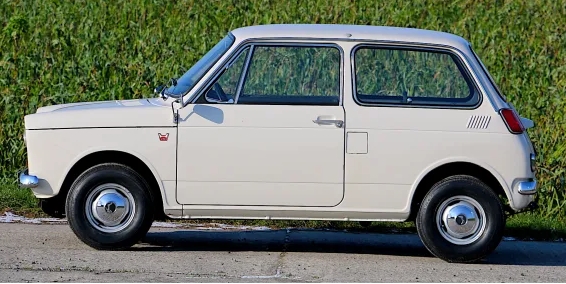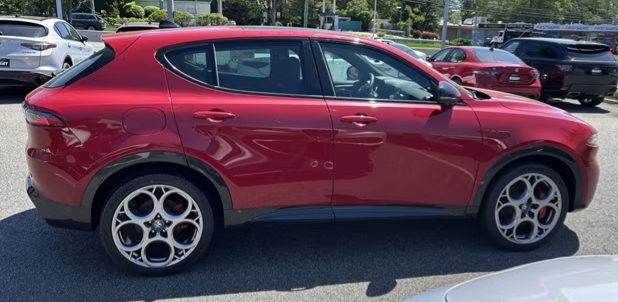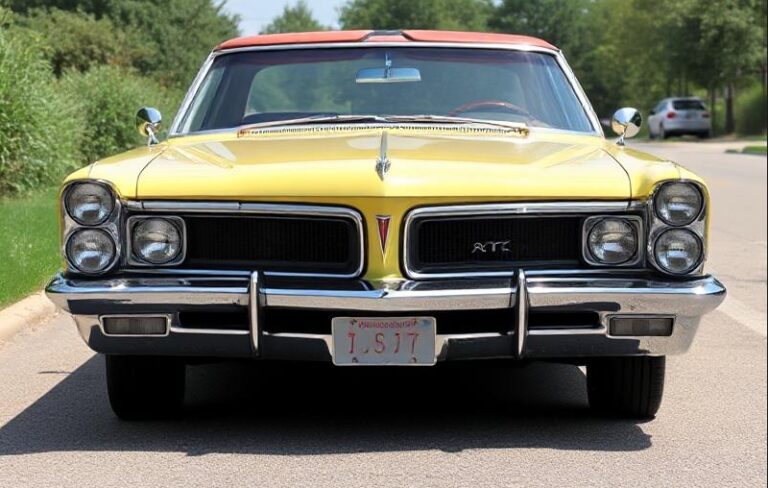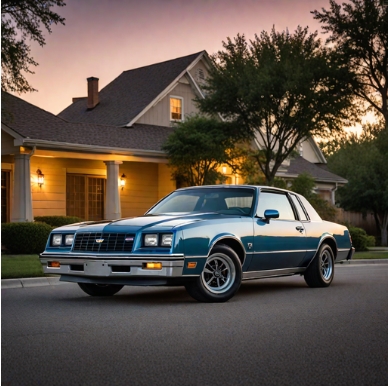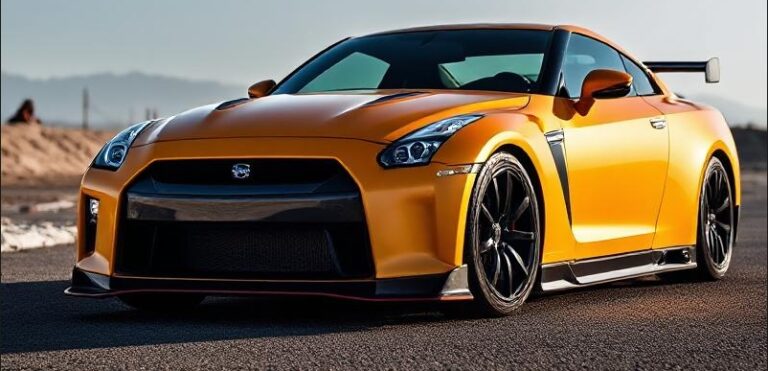The Pocket-Sized Revolution: Charting the Evolution of the Honda N360 & N600
In the annals of automotive history, few vehicles represent a company’s audacious ambition quite like the Honda N360. It was not merely a car; it was a four-wheeled manifesto. Born from a company that had already conquered the world on two wheels, the N360 was the tiny, high-revving seed from which a global automotive empire would grow. Its evolution, from a domestic Japanese marvel into the N600 that tested the waters of the American market, is a story of brilliant engineering, clever packaging, and the relentless spirit of Soichiro Honda.
The Context: Japan’s Kei Car Revolution
To understand the N360, one must first understand the unique automotive landscape of post-war Japan. The government, seeking to motorize the nation affordably, created the Kei-jidōsha or “kei car” class. These vehicles were subject to strict regulations on size and engine displacement in exchange for significant tax and insurance benefits. By the mid-1960s, the kei car limit was set at a maximum of 360cc.
Honda, already a titan of the motorcycle industry, had dipped its toes into four-wheeled vehicles with the T360 micro-truck and the S500 sports car in 1963. While technically impressive, they were niche products. The company needed a true mass-market passenger car to compete with rivals like Subaru (with its 360) and Suzuki (with its Suzulight). The N360, launched in March 1967, was Honda’s devastatingly effective answer.
The N360: The “N-koro” Takes Japan by Storm (1967-1970)
The N360, affectionately nicknamed the “N-koro” in Japan, was a masterpiece of space efficiency. Its design was heavily inspired by the British Mini, featuring a transverse-mounted engine and front-wheel drive, a layout that maximized interior space within a diminutive footprint. But where the Mini had a water-cooled four-cylinder engine, Honda played to its strengths. The heart of the N360 was a technical marvel derived from the company’s legendary CB450 motorcycle.
It was a 354cc, air-cooled, SOHC parallel-twin engine that screamed to an astonishing 8,500 rpm redline. It produced 31 PS (Pferdestärke, or metric horsepower), a figure that dwarfed its competitors, most of which struggled to produce 20 PS. This potent powerplant, mated to a four-speed manual transmission, gave the lightweight N360 spirited performance, earning it the nickname “the people’s rocket.” It was faster, more powerful, and arguably more advanced than anything in its class, and the Japanese public responded enthusiastically.
Evolution of the Japanese N360 Series:
N-I Series (March 1967 – 1968): The initial launch model is retroactively known as the N-I. It set the template for the entire series.
Models and Trims:
N360: The primary two-door sedan. It was offered in several trims that evolved slightly over its first year.
Standard: The most basic, no-frills model.
Deluxe & Super Deluxe: These trims added more comfort and cosmetic features, such as additional chrome trim, more elaborate hubcaps, a radio, and plusher interior materials.
LN360 (June 1967): To capitalize on the N360’s success, Honda introduced the LN360, a “Light Van” or two-door station wagon. It featured a horizontally split tailgate and offered significantly more utility, becoming popular with small business owners and families.
N360M (Minor Change): A late 1967 update saw small changes, often referred to as the ‘M’ model, which refined some interior and exterior details.
N360 Touring / S-Type (1968): The first performance variant. Honda fitted twin CV carburetors and made other tuning adjustments to the engine, boosting power to an impressive 36 PS. This was the original “hot hatch” before the term was even coined, a tiny car with a giant-slaying spirit.
N-II Series (January 1969 – 1970): The N-II was an evolutionary update focused on safety and interior refinement.
Models and Trims: The model structure remained similar, but with notable changes.
N360 & LN360: The core sedan and van models continued.
The most significant change was the dashboard, which was redesigned with recessed “airplane-style” instruments behind a single plastic cowl to reduce reflections and injuries in a collision. The steering wheel was also updated to a safer, padded design.
Trim levels continued with Standard, Deluxe, Super Deluxe, Custom, and the performance-oriented S-Type.
N-III Series (January 1970 – 1972): The final major iteration of the domestic N360, the N-III brought more cosmetic changes and a focus on usability.
Models and Trims:
N360 & LN360: The sedan and van were updated with a bold new front fascia. The headlights were now housed in thick, black bezels connected by a slim grille, giving it the “eyebrow” look. The dashboard was redesigned again.
A significant addition was the Hondamatic transmission, a two-speed semi-automatic gearbox that made the N360 accessible to a wider range of drivers.
The engine lineup was also revised with the introduction of the N360E engine, designed for lower emissions and improved low-end torque, slightly taming the car’s peaky, high-revving nature for better urban drivability.
The trim hierarchy was solidified, typically offered as Deluxe, Super Deluxe, Custom, and G-Type (a well-appointed grade).
The N600: Honda’s American Scout Team (1969-1972)
While the N360 was a domestic triumph, Honda had global aspirations. Soichiro Honda knew the 354cc engine, perfectly adequate for Tokyo’s streets, would be dangerously underpowered on American freeways. The solution was the N600, an export-focused model designed to be Honda’s first official foray into the crucial US car market.
The N600 was introduced in America in late 1969 (in Hawaii) and rolled out to the mainland in 1970. Visually, it was nearly identical to its N360 sibling, but under the hood lay a much more powerful engine. Honda engineers bored and stroked the twin-cylinder block to 598cc. This larger, all-alloy, air-cooled engine produced between 36 and 45 horsepower, depending on the market and state of tune. It still screamed to a 9,000 rpm redline and allowed the N600 to reach speeds of around 80 mph (130 km/h), making it a viable, if not exactly relaxing, highway vehicle.
The N600 was a gamble. It arrived in a market dominated by V8-powered land yachts. Dealerships, accustomed to selling motorcycles, were suddenly tasked with moving cars. The N600 was marketed simply as the “Honda N600 Sedan.” It was quirky, tiny, and buzzy, but it was also incredibly fuel-efficient, ingeniously packaged, and mechanically robust. It was a stark contrast to another small car import, the Subaru 360, which had been famously lambasted by Consumer Reports as “unacceptably hazardous.” The Honda, by comparison, was a proper, well-engineered automobile, just scaled down.
Evolution and Models of the N600:
Production Years: 1969 – 1972 (in the US market).
Models and Trims:
N600 Sedan (known as the N600E in some markets): This was the primary model sold in North America and Europe. Unlike the granular trim levels in Japan, the export models were more standardized. Most were sold as a single trim level, often referred to as the N600 Sedan, which was roughly equivalent to a Japanese Deluxe or Super Deluxe model. Features included a heater, vinyl seats, and basic instrumentation.
Later models (post-1971) saw minor updates to meet evolving safety standards, including changes to side-marker lights and interior components. A key visual change was the move from painted steel dashboards on early models to padded vinyl dashboards on later ones.
The Sibling: The Z600 Coupe While not technically an “N,” no history is complete without mentioning its sporty sibling, the Z600 (or Z360 in Japan). Launched in 1970, the Z Coupe was based on the same platform but featured a futuristic, fastback “Coke bottle” design with a distinctive large glass rear hatch framed in black plastic. It was Honda’s style-conscious offering, a tiny GT car that further showcased the versatility of the N-series platform. It used the same 598cc engine as the N600 and was sold alongside it in export markets, offering a sportier choice for buyers.
.
Many car aficionados have multiple hobbies, like boating as well as auto stuff. Those who don’t already own a boat (and even some that do), may have thought about building their own boats. It’s really not as hard as you’d think. Just take a look at these easy boat building plans!

.
Legacy: The End of an Era and the Dawn of the Civic
By 1972, the writing was on the wall for the N series. Increasingly stringent safety and emissions regulations, particularly in the United States, were becoming impossible for the air-cooled engine to meet. The design, revolutionary in 1967, was now aging.
Honda ceased production of the N360 and N600 to make way for their successors. In Japan, the torch was passed to the water-cooled Honda Life. Globally, however, the N600’s true legacy was as a pathfinder. It had established a small but vital dealer network in America and had proven that there was a market for a well-made, efficient, and reliable small car from Japan.
This groundwork was absolutely critical for the car that would arrive in 1972: the Honda Civic. The Civic was everything the N600 was, but better. It was larger, safer, quieter, and powered by a revolutionary water-cooled CVCC engine that could meet new emissions standards without a catalytic converter. The N600 was the brave scout team that weathered the initial risks; the Civic was the main invasion force that conquered the world.
Today, the Honda N360 and N600 are cherished classics. They are tangible links to the audacious spirit of a company on the cusp of greatness. These tiny cars, with their motorcycle souls and brilliant packaging, did more than just motorize a nation or test a foreign market. They put the entire automotive world on notice that Honda was here to stay, proving that a revolution doesn’t always need a grand scale—sometimes, it can fit in your pocket.
